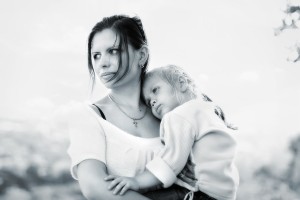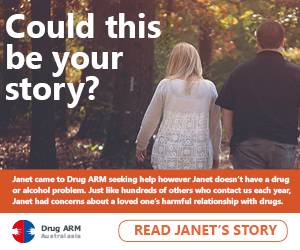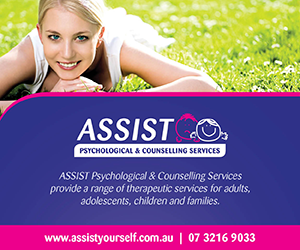[WHO] Peter McConchie, director of social justice organisation People Culture Environment and manager of its Culture is Life campaign.
[WHAT] Reducing the Aboriginal youth suicide rate, which has soared to become the highest in the world.
[HOW] Listen to the elders of indigenous communities, and help them teach traditional culture to young people.
There is a national tragedy occurring that is causing the death of young people and it can and should be stopped. Every life is precious. In the past 20 years, the indigenous youth suicide rate across the top half of Australia has become the highest suicide rate in the world.
Two decades ago, one in 20 deaths by suicide was that of an Aborigine. Given indigenous people make up only about 2.5 per cent of the Australian population, that was already disproportionately high. Today, half of deaths by suicide in northern Australia are those of indigenous people.
Australian Bureau of Statistics figures show Aboriginal men die by suicide at a rate four times higher than non-indigenous men, while for Aboriginal women the figure is five times higher.
The group most at risk is children, mostly boys, aged between 10 and 14. These young people account for as many as four in five of all indigenous deaths by suicide.
A recent report may well hold the key to reducing these horrifying realities. The Elders’ Report into Preventing Indigenous Self-Harm and Youth Suicide is an unprecedented insight into the problem, and it presents solutions. It can be seen as lore-makers helping lawmakers.
The report is unique because it is an unfiltered presentation of the view of leaders of indigenous communities. It contains 30 direct transcripts of elders’ views.
Their conclusion is a clarion call to policymakers, and comes as Prime Minister Tony Abbott says improving outcomes for indigenous Australians is one of his top priorities.
His brother-in-arms in the mooted fight for change is Aboriginal leader Warren Mundine, a former national president of the ALP whom the Prime Minister has appointed chairman of the Australian government’s Indigenous Advisory Council.
The elders’ position is encapsulated in the introduction by Professor Pat Dudgeon, who is the co-chairwoman of the federal government’s Aboriginal suicide advisory group and a National Mental Health Commissioner.
Professor Dudgeon, who describes the situation as a crisis, says: ”There is no more urgent time to sit down and listen to our elders than now. For any solution to be effective, their guidance must form the foundation of how governments and service providers work with Aboriginal people.
”After so many years of top-down policymaking and funding programs that have not achieved the changes intended on the ground, they are crying out to be heard and to be involved in healing their communities and giving young indigenous people their inheritance of cultural knowledge, identity and strength.”
In a foreword to the report, Aboriginal and Torres Straight Islander Social Justice Commissioner Mick Gooda writes that a history of dispossession and assimilation has created manifold problems for indigenous people. He says youth suicide has gone from being virtually non-existent a generation ago to ”an epidemic that is devastating families and communities”.
Gooda implores policymakers to listen to the elders and realise that ”long-term solutions can only come from within communities, who need to own and control the healing process”.
Today’s guest in The Zone, photographer and writer Peter McConchie, is a director of social justice organisation People Culture Environment and manager of its Culture is Life campaign, which produced the report.
”It is a great opportunity for policymakers to … realise this is the solution. Let’s do this. It is that simple; listen to the voices of the communities.”
He says Abbott, Mundine and Indigenous Affairs Minister Nigel Scullion are the ”fundamental recipients” of the report.
”They have been given the answers, the unanimous solutions, and have the power to implement change. This is something that needs to happen now.”
A video statement by McConchie and the transcript of our discussion can be found at theage.com.au/federal-politics/the-zone. He will be online for an hour from midday to respond to questions and comments, which can be submitted from this morning.
The Culture is Life campaign is gaining momentum. It is not about seeking increased funding. Rather, it is about helping inform well-intentioned policymakers to direct funding where it will be effective.
Stage two of the Culture is Life campaign has just started. It is called the National Elders’ Healing Initiative and will promote the report nationally.
McConchie abandoned a glitzy life as an international fashion photographer, preferring to return to Australia and focus on indigenous culture and environmentalism – and to live a more simple and spiritually rich existence.
He was shocked by what he found in indigenous communities, and was embraced and housed for several months by relatives of acclaimed Aboriginal musician, educator and 1992 Australian of the Year Mandawuy Yunupingu.
He has spent months at a time ”living on country”, working on photographic books he hopes will illustrate for the broader community the richness and importance of Aboriginal culture.
The elders are the only people who can heal their communities, he says. ”They are the teachers … Whether it be traditional land management with fire, whether it be lore and initiation, whether it be language, dance, art, storytelling through art, they are the teachers. They are the people who are holding the culture and holding the knowledge with the responsibility to pass it on to make sure culture survives.”
He says elders need to be given resources – primarily vehicles and fuel – to get as many young people as possible out on country.
”You have got an elder there who is highly respected in the community and sitting in the passenger seat of a troop carrier with one of the senior members of the community next to him or her saying, ‘Come on, get in the car – it’s time for you to come and do your lore, it’s time for you to come out and learn your culture. Learn your cultural dance. Learn your totems. It’s time for you to learn who you really are.’
”That young person might have his head down or be a bit shy about it. But as soon as he or she gets in the vehicle with the other young men or women and moves forward, being strengthened culturally, a lot of great things are going to start taking place for those young people.”
At the end of The Elders’ Report is a list of 21 programs that have helped communities heal but have struggled for funding. McConchie says money should be redirected to such programs, most of which involve on-country learning and community-led services.
”The community leaders are not asking for more money to be spent. They are asking for the money that has been previously allocated to be spent the right way. And that is supporting community-led healing programs, as the community leaders know who is at risk and understand the cultural and emotional reasons behind this.
”Approaching suicide and self-harm from a Western mental health perspective is ineffective; a cultural approach is needed and this can only be done from within the community.”
Should you wish to read and support the report and its recommendations, go to http://bepartofthehealing.org
The final words here should go to some of the elders.
Bernard Tipiloura of Melville Island: ”Not supporting homelands, not supporting cultural education and not supporting cultural activities is actually a matter of life and death for us. It’s not just a nice little thing to support; it’s our people’s inner soul.”
Lorna Hudson of Derby: ”We are trying to reintroduce the survival experience to them [young people] by taking them out to the bush. But without specific funding for this healing, we can’t do much.”
Wayne Bergman of Kimberley: ”The challenge today is in trying to find a balance between being able to earn some kind of wage, but in also maintaining traditional knowledge, values and customary practices.”
Dr Anne Poelina of Broome: ”All of us, whether we are young or old, need to connect with nature and the environment because it helps build our resilience. It’s also a healing mechanism … we need to have connectivity to country.”
Joe Brown of Fitzroy Crossing: ”If they lose language and connection to culture, they become a nobody inside and that’s enough to put anyone over the edge.”
This article first appeared on ‘Sydney Morning Herald’ on 26 May 2014.
























mortgagecrow.com
Thanks for the article.Thanks Again. Fantastic.